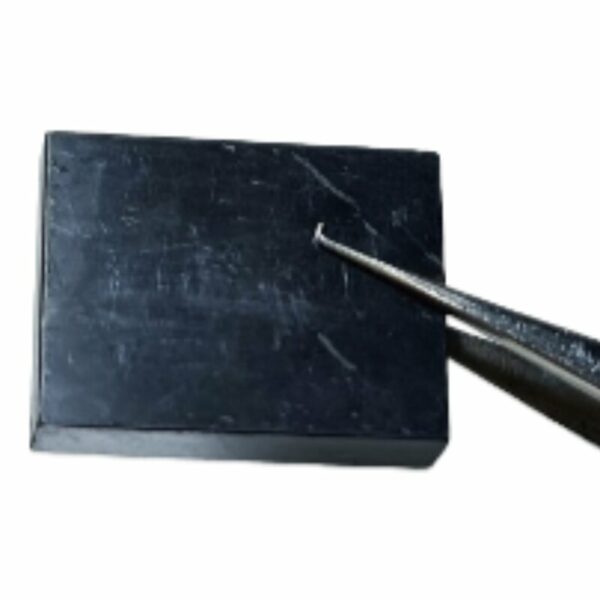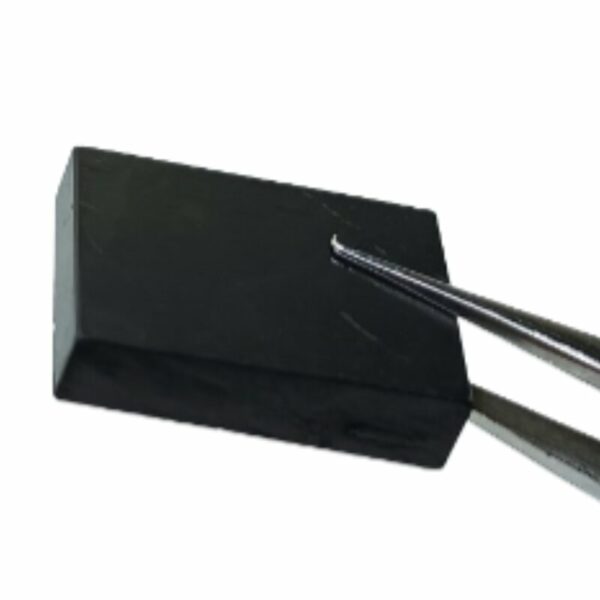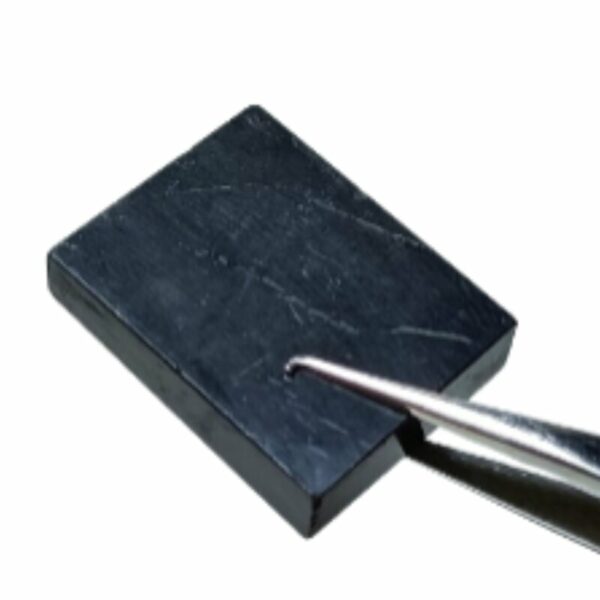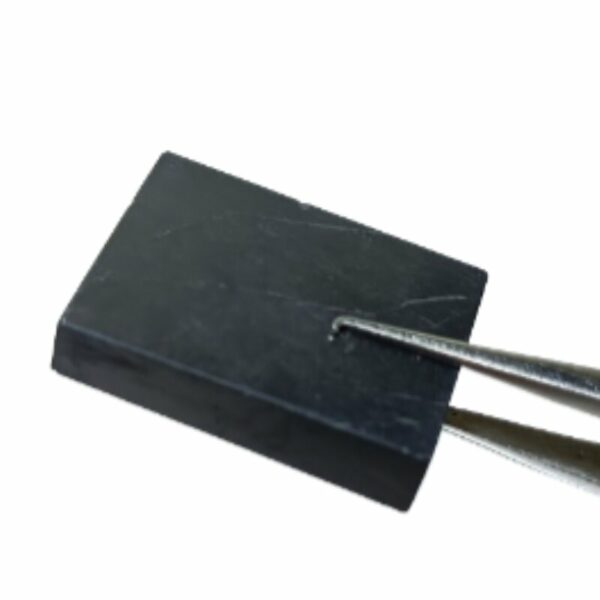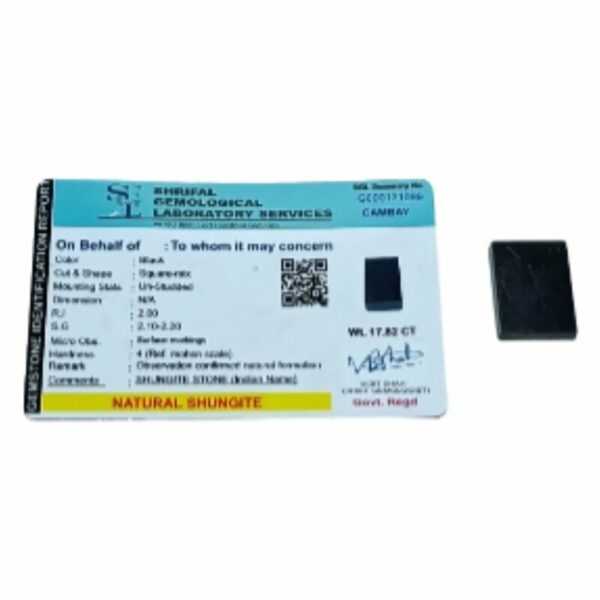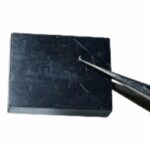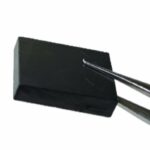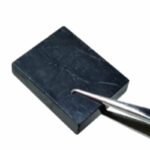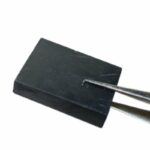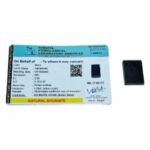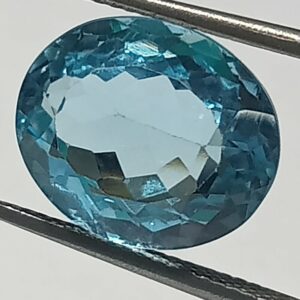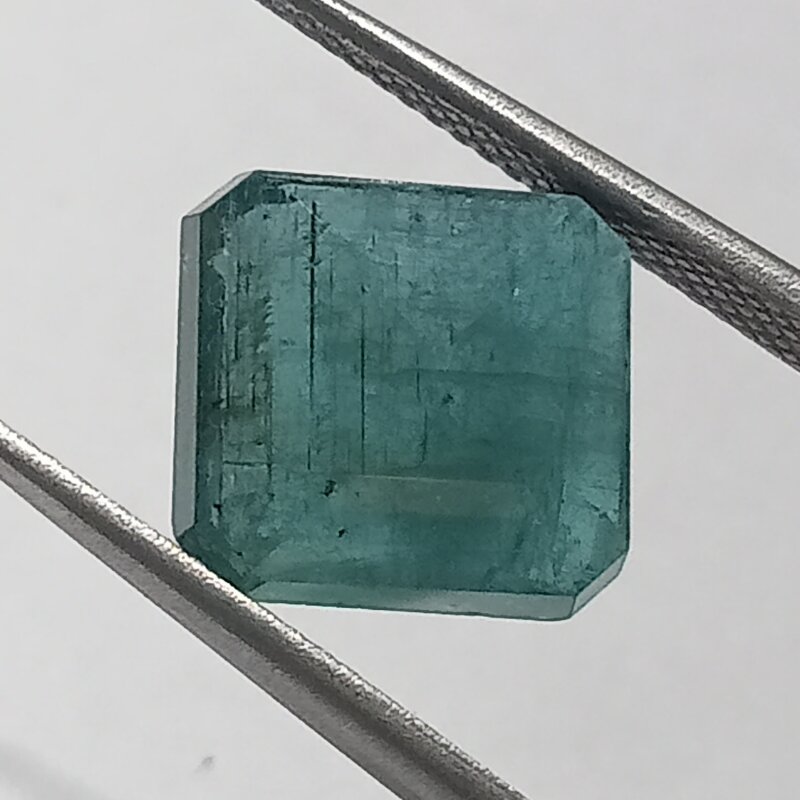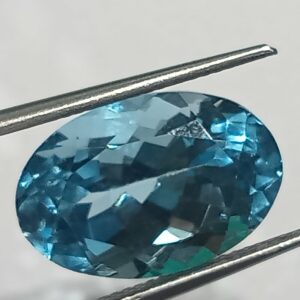Energized Certified Original Shuganite Stone EMF Chip approx 15 crt
₹751.00 inc.GST
- Shuganite EMF Chip is believed to shield against electromagnetic field (EMF) emissions.
- It may draw support from an old study that showed protective effects against EMF in rats.
- Shuganite is a carbon-based stone, and its potential EMF-shielding properties require more research for human benefits.
- This chip is linked to its unique composition, including fullerenes, carbon nanostructures.
- While promising, its effectiveness and safety for EMF protection in humans need further investigation.
- Description
Description
NOTE: All images shown are for illustration purpose only. Actual product may vary.
Certified Original Shuganite Stone EMF Chip approx 15 crt
Shungite is a rare black stone composed of up to 99 percent carbon, primarily found in Shunga, a village in Karelia, Russia. This stone possesses a unique composition, containing fullerenes, which are 3-D spherical molecules comprised of 60 carbon atoms, often referred to as buckyballs. In addition to fullerenes, shungite includes nearly all the minerals found on the periodic table.
The origin of shungite remains a mystery, as it is distinct from materials made of carbon that typically arise from the decay of organic substances like ancient forests. Shungite is estimated to be at least 2 billion years old, predating the existence of organic life on Earth. Several theories about its origin include:
- Meteorite Impact: It is suggested that a massive meteorite collision with Earth deposited shungite into the ground.
- Microorganism Formation: Some propose that shungite formed due to the presence of microorganisms in nearby water.
- Changing Organic Matter Composition: Another theory posits that the composition of organic matter in sedimentary rocks underwent alterations over time.
Despite uncertainties regarding its formation and origins, the potential benefits associated with shungite are often attributed to its fullerene content.
Shungite’s Potential Properties:
- EMF Shielding: Some users claim that shungite has the ability to shield against electromagnetic field (EMF) emissions. While an older study from 2003 suggested that shungite protected rats from electromagnetic irradiation, it is outdated and limited to animal experiments. The efficacy of shungite in protecting humans from EMF emissions requires further research for confirmation.
- Antioxidant Properties: Shungite has demonstrated antioxidant properties in animal studies. When applied to the damaged skin of mice exposed to ultraviolet B radiation, it reduced the production of reactive oxygen species (ROS) and increased the activity of antioxidant enzymes. However, more research is needed to determine its antioxidant potential for humans.
- Anti-Inflammatory Effects: The same 2017 animal study showed that shungite reduced inflammation by lowering the levels of inflammatory markers, including cytokines. This suggests potential utility for inflammatory diseases, but additional research is necessary.
- Antimicrobial Activity: Shungite contains fullerenes, which are carbon nanostructures capable of damaging the cell walls of bacteria and viruses. When these nanostructures interact with microbes, they can lead to microbial death. However, further studies are needed to understand how shungite’s fullerenes specifically affect pathogens in human diseases.
In summary, while shungite shows promise in various areas, including EMF shielding, antioxidant properties, anti-inflammatory effects, and antimicrobial activity, further research is essential to confirm and better understand these potential benefits in the context of human health.

